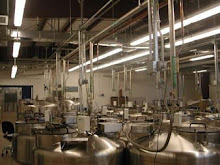MVE’s customer service has been receiving numerous calls about switching out a three-tube temperature sensor assembly from the dual tube assembly. For cryogenic freezers already in service, three tube assemblies can either be purchased as an accessory or with a new cryogenic freezer.
When you are placing the order for your cryogenic freezer, it is the best time to make sure that you receive the correct sensor assembly. Two-tube sensor assembly comes standard with liquid nitrogen freezers. Have your customer service representative enter a second line item replacing the two-tube assembly with a three-tube assembly. If you would like a three-tube assembly, find the part number for the three-tube assembly below.
| Freezers | Tube Length | Dual P/N | Three P/N |
| 1842P | 26” | 11747450 | 11793341 |
| 800, 1500 series | 39” | 11747468 | 11793350 |
| Rest of 1800 series | 44” | 11747476 | 11793368 |
